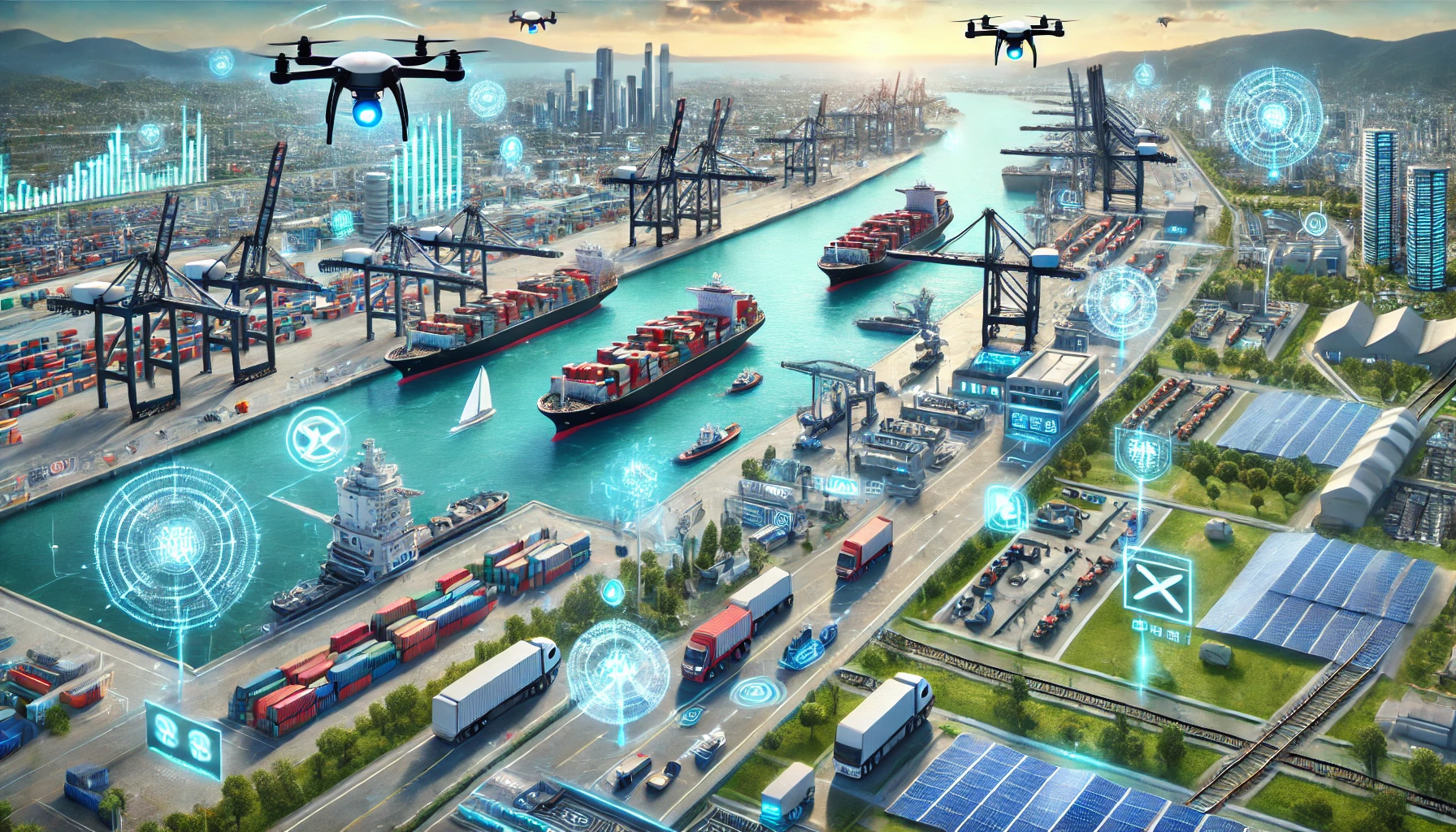Smart Port Digitalization: Overcoming Barriers and Embracing Innovation Post-COVID-19
The study identifies key success factors for smart port digitalization, emphasizing the integration of advanced technologies to enhance operations, safety, and environmental sustainability post-COVID-19. Leading ports like Hamburg, Rotterdam, Singapore, and Shanghai showcase these advancements, highlighting the need for government and private sector collaboration to overcome digitalization barriers.

The global maritime industry has experienced significant transformation in the post-COVID-19 era, with a pronounced emphasis on smart port digitalization. A comprehensive study by researchers Yi-Chih Yang and Yun-Hsin Hsieh from the National Kaohsiung University of Science and Technology in Taiwan delves into how ports worldwide are integrating advanced technologies to enhance operations, mitigate climate impact, and improve safety. Employing methodologies such as the Fuzzy Delphi and Fuzzy Analytic Hierarchy Process (AHP), the research identifies key factors critical to the successful digitalization of ports. The international outbreak of COVID-19 has accelerated trends in unmanned distribution and online consumption, prompting ports to adopt technologies like artificial intelligence, blockchain, the Internet of Things, and big data. The study emphasizes that while digital solutions, technology standardization, and digital asset management are essential, enhancing port safety and managing carbon emissions emerge as top priorities. These findings are derived from an extensive literature review and expert interviews, targeting entities such as shipping companies, agencies, and port management organizations.
Transforming Ports Through Technological Advancements
The digitalization journey of ports can be divided into three stages. The first stage, beginning in the 1980s, focused on electronic data interchange technology, facilitating the digitization of trade-related documents and transportation information. The second stage, spanning the 1990s to 2010, introduced positioning and identification technologies and integrated environmental awareness, setting the foundation for terminal automation. The current stage emphasizes the flow of information within the port area, utilizing data and telecommunications, and promoting automated work processes through sensor installation and machine communication. Despite these advancements, port digitalization faces several challenges, including high investment costs, the long-term integration of new and old technologies, and a lack of standardization across digital platforms. The study highlights that while digitalization offers numerous advantages, such as improved efficiency, reduced costs, and enhanced safety, these benefits are often offset by significant financial and operational hurdles.
Leading the Charge: Pioneering Ports in Digitalization
In practical terms, several ports are at the forefront of digitalization efforts, including Hamburg, Rotterdam, Singapore, Shanghai, and Kaohsiung. The Port of Hamburg’s smartPORT project, launched in 2012, is divided into smartPORT energy (SPE) and smartPORT logistics (SPL). SPE focuses on renewable energy use, exemplified by the Altona cruise terminal’s shore power facilities, which significantly reduce carbon and nitrogen oxide emissions. SPL, on the other hand, optimizes port traffic by integrating information systems across transportation companies, effectively reducing truck waiting times and emissions. The Port of Rotterdam’s initiatives include the Port Forward digital platform, which uses AI to manage ship berthing times and optimize fuel use, thus promoting efficient and environmentally friendly operations. Singapore’s Tuas mega port, set to be fully automated by 2040, aims to consolidate all current terminals to reduce truck turnaround time and congestion, leveraging renewable energy for its operations. Shanghai’s Yangshan automated terminal, China’s first fully automated terminal, employs remote-operated gantry cranes and automated guided vehicles to enhance efficiency and safety, with a strong emphasis on green initiatives such as shore power equipment and low-sulfur fuel usage. Kaohsiung, although trailing behind these leading ports, has proposed the "Taiwan Port Group Trans-SMART Project," aiming to integrate big data analysis, sensor recognition, remote control, and AI to create a smart, high-quality, and sustainable port environment.
Overcoming Barriers with Government and Private Sector Collaboration
The study underscores the importance of government and private sector collaboration to overcome the barriers to digitalization. Government support, through subsidies and regulatory adjustments, is crucial for facilitating the digital transformation of ports. Furthermore, the study recommends that port operators and stakeholders focus on critical areas such as safety enhancement, traffic optimization, and environmental protection to drive digitalization. Understanding these critical factors is expected to motivate port operators to embrace digital development, ensuring long-term growth and resilience. The research concludes that the successful digitalization of ports depends on integrating innovative technologies, managing carbon emissions, and ensuring safety and operational efficiency. Ports must accelerate digital adoption to remain competitive and sustainable in the evolving global maritime landscape.
A Roadmap for the Future of Maritime Logistics
The study provides a detailed roadmap for ports to navigate the challenges and harness the benefits of digital transformation. By prioritizing digital solutions, business management, and technology standardization, ports can significantly improve their operations and sustainability. The insights gained from this research offer valuable guidance for port operators and policymakers, highlighting the need for strategic investments and regulatory support to achieve the full potential of smart port digitalization. As ports continue to evolve, the adoption of digital technologies will play a pivotal role in shaping the future of global maritime logistics, driving efficiency, and fostering environmental stewardship.
Driving Efficiency and Environmental Stewardship
The successful digitalization of ports hinges on integrating innovative technologies, managing carbon emissions, and ensuring safety and operational efficiency. Ports must accelerate digital adoption to remain competitive and sustainable in the evolving global maritime landscape. The study's insights provide a roadmap for ports to navigate challenges and harness the benefits of digital transformation, ensuring long-term growth and resilience. By prioritizing digital solutions, business management, and technology standardization, ports can significantly improve their operations and sustainability. As ports continue to evolve, the adoption of digital technologies will play a pivotal role in shaping the future of global maritime logistics, driving efficiency, and fostering environmental stewardship.
- FIRST PUBLISHED IN:
- Devdiscourse










